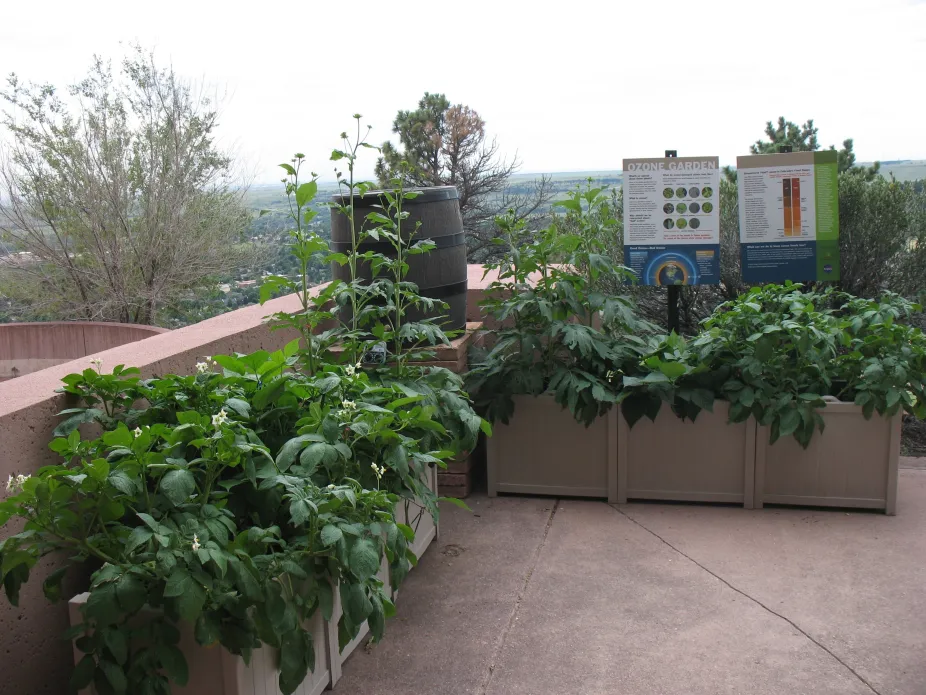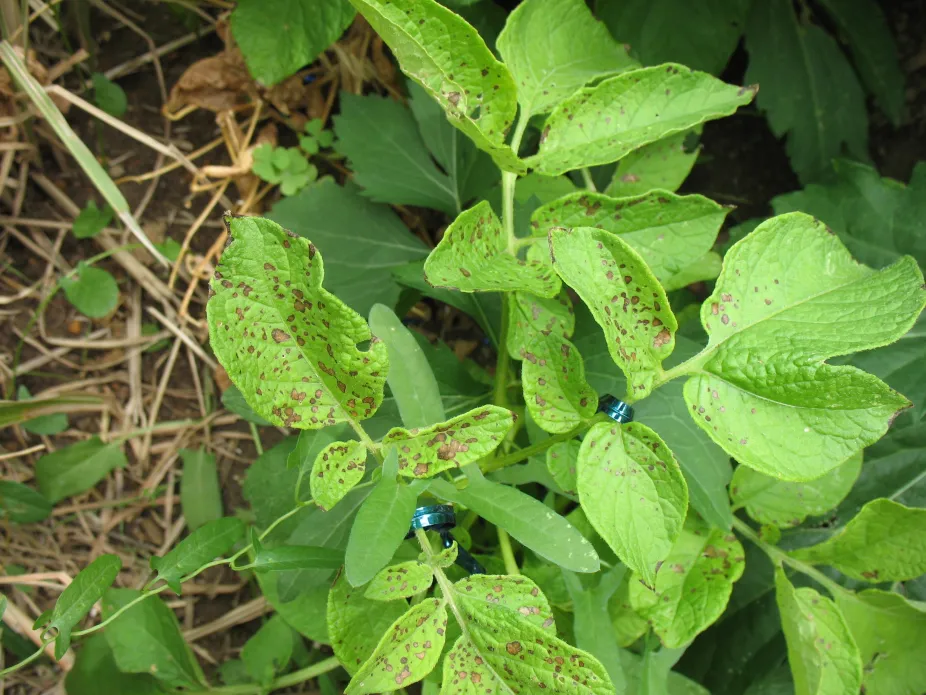Ozone-sensitive Plants
This blog post was contributed by Danica Lombardozzi, a scientist at the National Center for Atmospheric Research (NCAR). Danica works in the Terrestrial Sciences group of the Climate and Global Dynamics Laboratory, and one of her research interests is the impact of ozone on plants.
By Danica Lombardozzi
Ozone gardens are planted with specific plants that show visible signs of damage from ozone. Our gardens include four types of plants that develop these visible symptoms:
- Cutleaf coneflower, native to Colorado
- Common Milkweed, native to the Eastern U.S.
- Snap bean, a crop variety
- La Chipper potato, a crop variety

The ozone garden at NCAR’s Mesa Lab cafeteria patio (pictured above) is planted in planter boxes and watered using a drip irrigation system.
NCAR/Danica Lombardozzi
To plant the garden, we had to get special seeds from the U.S. Department of Agriculture, Penn State University, and Rocky Mountain National Park, because seeds for ozone-sensitive plants are not always widely available. For instance, the crop varieties that we planted in our garden are no longer used in agricultural production because ozone levels are too high for them to grow well. In fact, entire fields of the La Chipper potatoes were plowed over in the 1970s due to the fact that the yield was so low that it cost too much to harvest them!

Extensive ozone damage on La Chipper potatoes in August shows us why this potato variety is not widely used as a crop anymore.
NCAR/Danica Lombardozzi
Have you ever seen ozone damage on plants? Here is a clue: The visible symptoms of ozone damage start as a “stipple”, which are dot-like areas of tan, red, brown, purple, or black on the leaf surface. They almost look like somebody made dots on the top of the leaf with a fine-point pen. Sometimes people think that damage from insects or plant diseases is ozone damage, so you need to be careful in identifying ozone damage. Other things that indicate that damage is from ozone, and not insects or diseases, is that ozone damage is usually only on the top of plant leaves and occurs only between the leaf veins, not on the veins themselves.